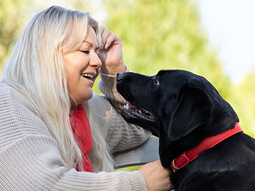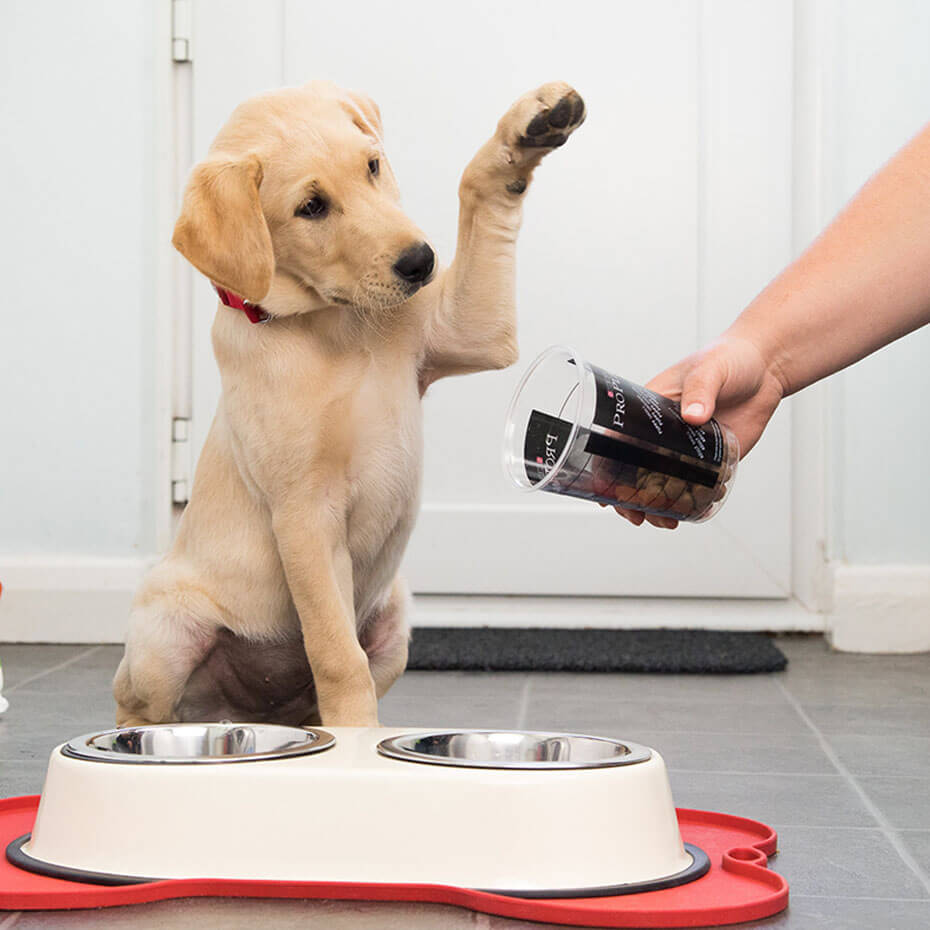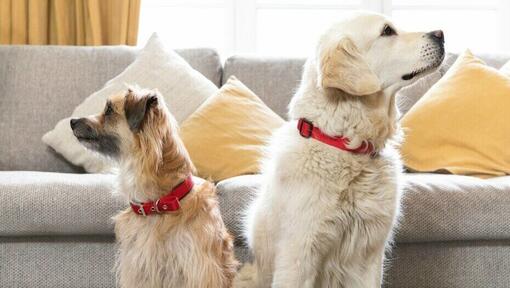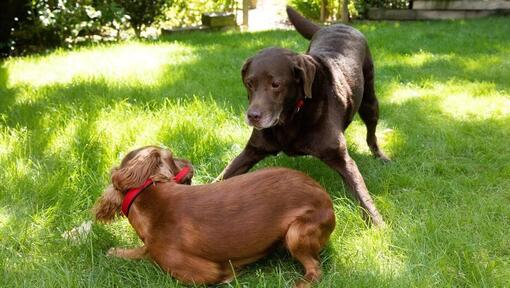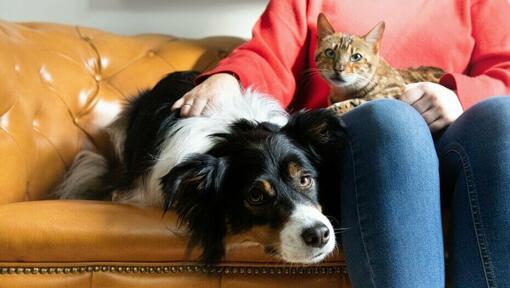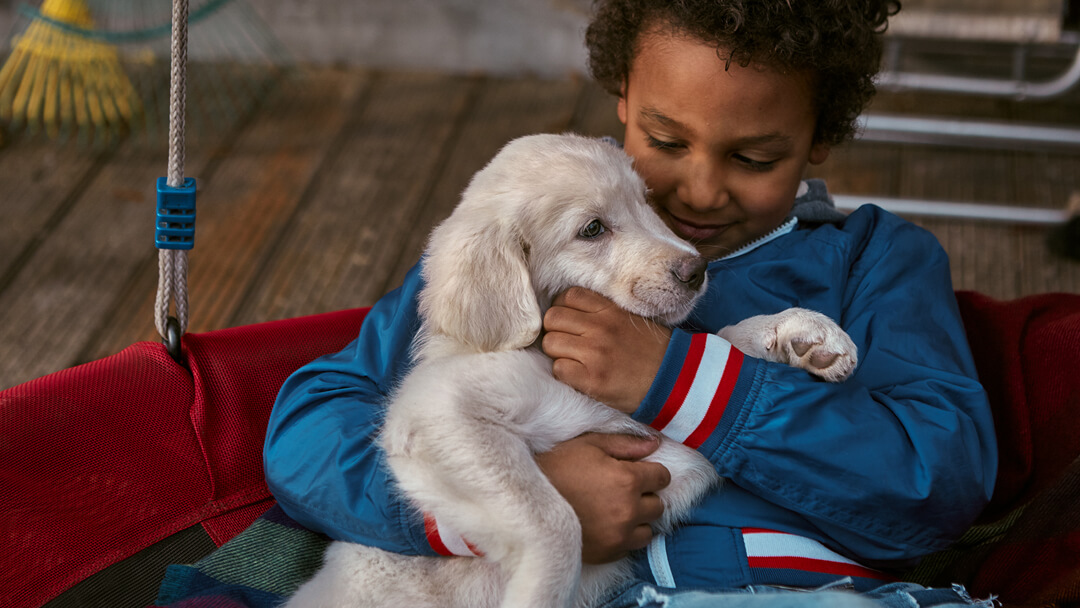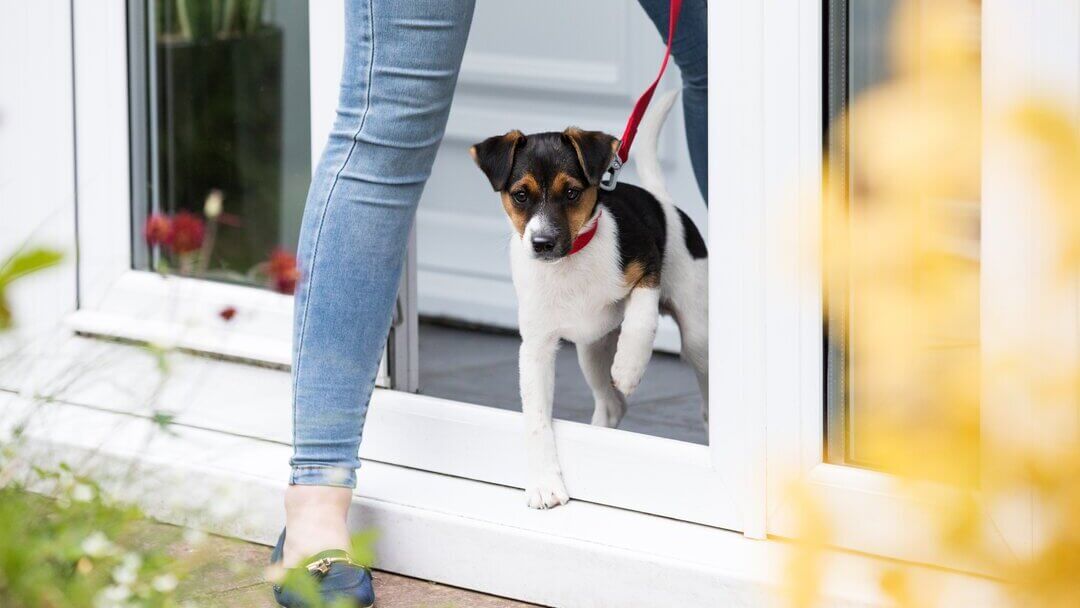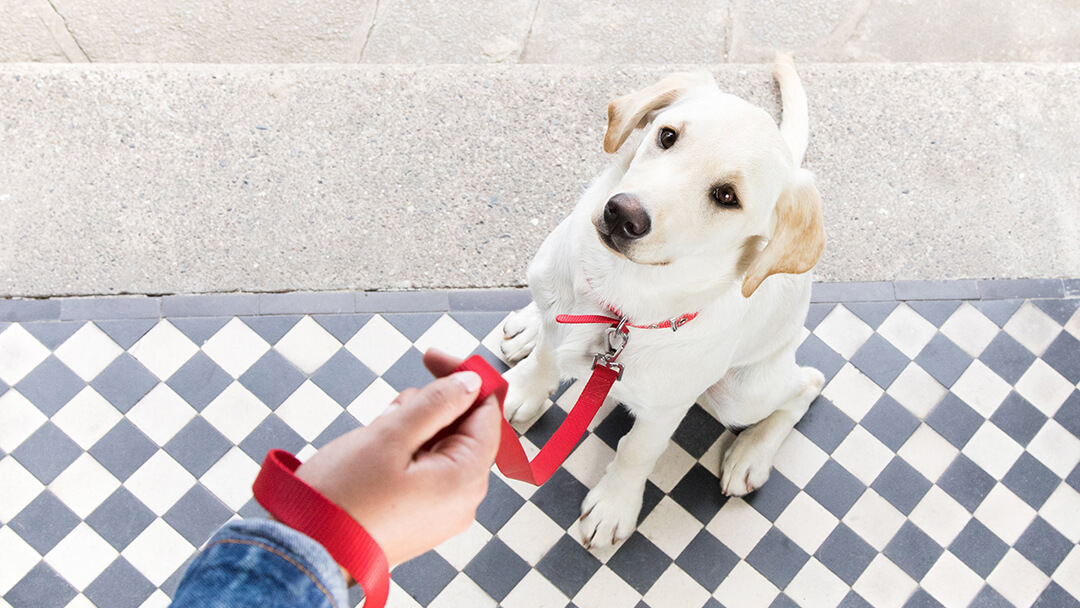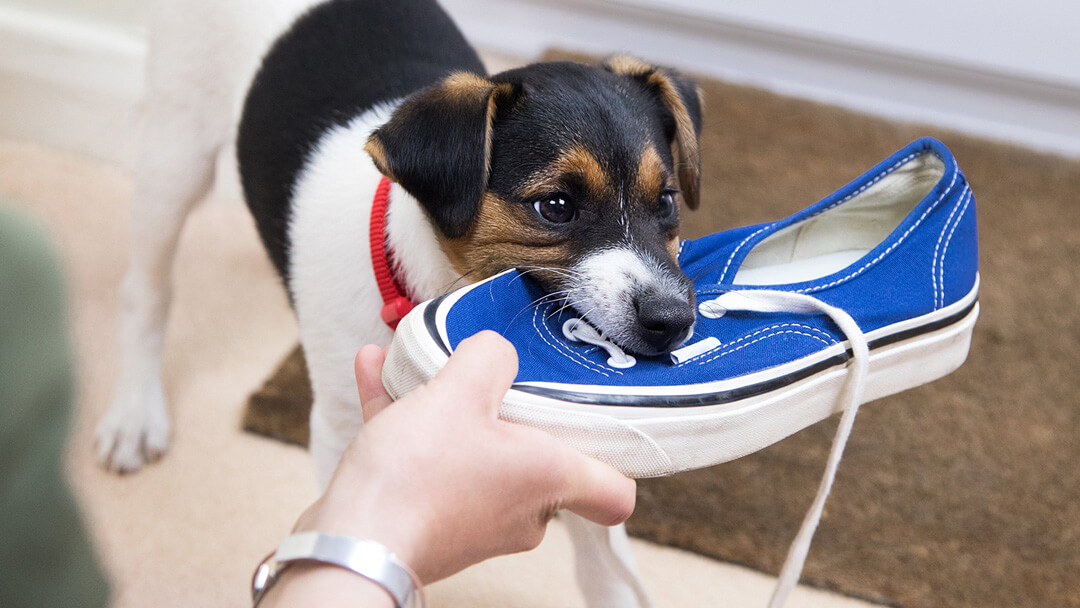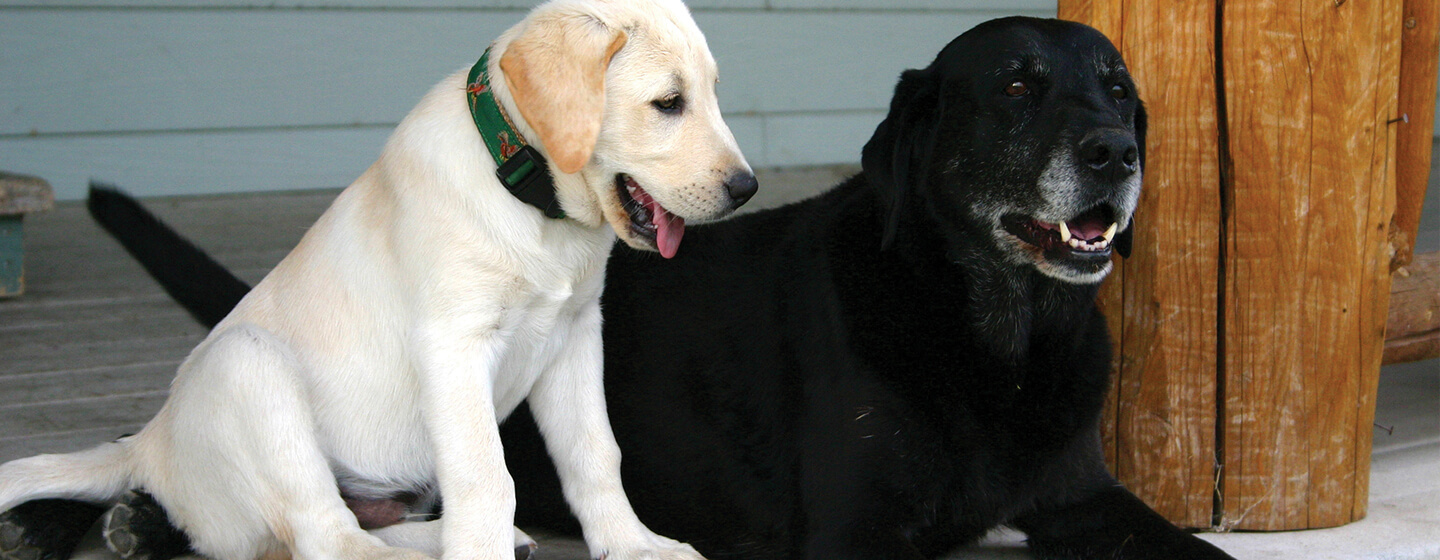

Dogs usually make firm friends easily, and your pup will almost certainly love being around other canine companions. In fact, they’ll probably jump at the chance to play with any animal, including cats. Here is how to introduce your new dog to the other pets in the family.
As with any new experience for your pup, it’s important to introduce them to other pets carefully, to give their friendship the best possible start. But oftentimes this is easier said than done. An older dog can get territorial when they’ve stopped being the only four-legged member of the family. And a cat will let you know in no uncertain terms when they’re not happy with the new roommate.
So, how to introduce a dog to a cat or a puppy to an older dog without World War III breaking out right in your living room? We’ve broken down the process of introducing a new dog into easy steps. Here is what you can do to help make the experience a smooth transition to family life for the new arrival and keep fellow pet residents calm during those first interactions.
"While dogs and cats can often get on well together, some pets are best kept away from dogs. Rabbits, guinea pigs, hamsters and reptiles, for example, should be protected at all times."
Introducing a puppy to an older dog
Your existing dog is probably used to having the house to themselves, so it can come as a bit of a shock to them to have to share for the first time! Try these tips to make introducing a new dog to your older dog as smooth as possible.
Find a neutral place for the dogs to meet
It’s best to introduce the new dog somewhere where your existing dog won’t have any territorial issues. It’s a good idea to introduce them outdoors, but if your pup hasn’t yet completed all their vaccinations, stick to your garden. Once your puppy’s had his first vaccination (at least), and your vet has said it’s safe to do so, take your puppy into the garden and let him have a good wander round to get used to all the exciting new sights and scents.
Making the first introductions
Then put your puppy on a lead and bring out your adult dog, also safely restrained on a lead. If your existing dog is large or excitable, it can be a good idea for them to wear a head-collar, to prevent any sudden lunges when saying hello. They’re bound to be curious about one another, so let them move towards each other, keeping their leads loose. Reassure them by calmly telling them both that they are good dogs, and ignore any whining or barking.
Keep everyone calm while introducing the new dog
Reward calm, restrained interactions with gentle strokes, calm words and perhaps some small treats. If either dog gets over-excited, it’s important that you stay calm yourself. Wait for them to calm down or separate them for a while before trying again.
Keep the first interactions short
Keep the introductions short, but frequent, and they should soon become the best of friends.
Wait for the indoors invitation
Allow your adult dog to ‘invite’ the puppy indoors. Keep both dogs on a lead until the pup has had a good look around and your existing dog is calmly accepting him without reacting. Keep rewarding acceptance and tolerance with calm praise, and gentle strokes for both your dog and your pup.
Top Tip: Before introducing your puppy to an older dog, make sure your existing dog's vaccinations are fully up to date, so that everyone stays happy and healthy.
If you have any concerns about the process of how to introduce a puppy to an older dog, ask for help ahead of time. Your local dog trainer or vet will be happy to give you advice.
Introducing another adult dog to your existing dog
If you're introducing a fully-grown dog to your existing dog, don’t be surprised if they don’t make friends straight away. Don’t be disheartened though - if you let them get to know each other gradually on quiet neutral ground away from home (ideally in a place that is unfamiliar to either of them), there’s usually no reason why they won’t get on and become firm friends.
Here are a few tips for how to introduce the new dog:
- If you’re introducing another dog, keep both dogs on leads - and possibly head-collars if they are large, nervous or excitable - and allow them to investigate each other.
- If they start to growl or bark at each other, separate them straight away and wait until they calm down before trying again.
- If, after many such attempts, they still refuse to get along, you could contact a professional behaviourist. Ask your vet for a recommendation.
How to introduce a dog to a cat or kitten
If your new puppy or dog is relaxed and comfortable in their new home, it’s time to introduce them to your existing cat. You’ll need to be patient and give your cat time to get used to their new housemate, particularly if your cat hasn’t lived with a friendly dog before! Here is how to introduce a dog to a cat and help them become fast friends.
Keep both your dog and your cat relaxed
Introducing a puppy to a cat can be a bit daunting. It’s not unusual for cats to react to the new dog by hissing or swatting at them, or trying to escape by running or hiding. So, your job is to help both pets relax in each other’s company.
Keep both your pets safe during their first interactions
The most important consideration when introducing a kitten to a dog is safety. Dogs can get very excited around cats, so it can take time for them to learn to get along! Make sure your cat or kitten is in a safe area, where the dog can’t reach them, and keep your new dog restrained on a lead.
Reward good behaviour
Reward your dog when they’re calm and, even if they bark excitedly, stay calm yourself.
Aim for short sessions and frequent breaks
Introducing your dog to the cat works best when you keep interactions to short sessions of a few minutes each time, in different rooms, several times a day so that they get used to seeing and smelling each other throughout the house. Keep your dog on a lead. After five minutes or so, take the dog away and let your cat leave the room for a break.
Letting your cat out of their safe area
Once they’re calm and relaxed, allow your cat to walk out of his safe area but still keep your dog on the lead. Allow them to investigate one another and make sure you give them lots of love and affection if they tolerate each other! Remember to stay calm yourself if either of them show they’re unhappy. Do this frequently visiting as many rooms in the house as possible.
Letting your dog off the lead
Supervise them until you know they’ll get along and only let your dog off the lead once you’re confident they won’t react or try to chase your cat. Make sure your cat has access to areas out of the dog’s reach, and can escape if they’re feeling unhappy.
Separate them at mealtimes
Separate cats and dogs at mealtimes so both can eat in comfort without the risk of each other stealing food.
Top tips for introducing your dog to the cat:
- Put your cat’s litter tray somewhere that’s easy for them to access, but away from the reach of your dog. It might not sound nice, but your dog might follow his scavenging instincts and think it’s a good idea to eat the contents!
- Make sure your cat gets plenty of opportunity to chase and stalk moving toys so your dog can relax without fear of being pounced on by a stalking cat.
Don’t worry if your dog and cat don’t become best friends. Cats are often naturally independent and may just ignore your dog, even if they’ve accepted their presence. With time, though, most cats and dogs that live together do become friendly, even if it is very much on the cat’s terms! As long as they each have their own space, with dog-free zones for the cat, everything should work out fine.
If your dog continues to be excitable or aggressive around your cat after several introduction attempts, seek professional advice from your vet and ask if a specialist canine behaviourist could help them learn to live with each other. Discover more about aggressive behaviour in dogs and ways to counteract it in our useful guide.
